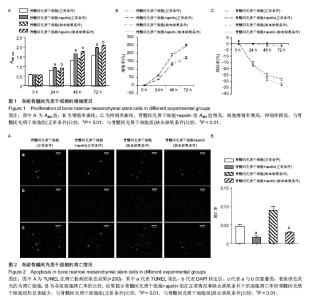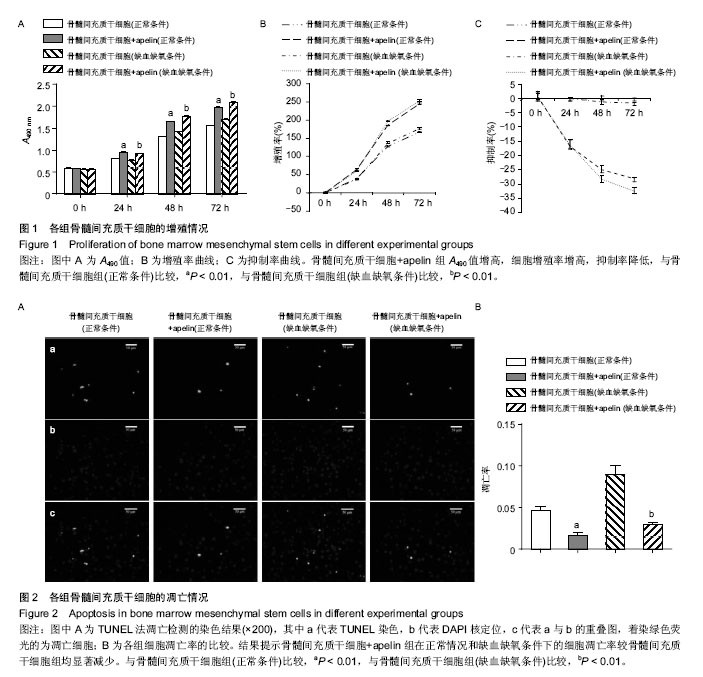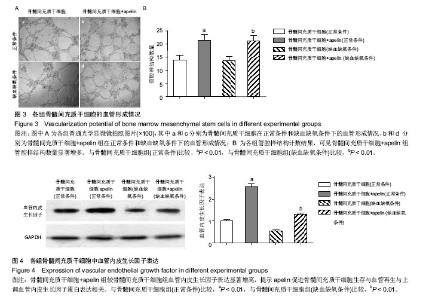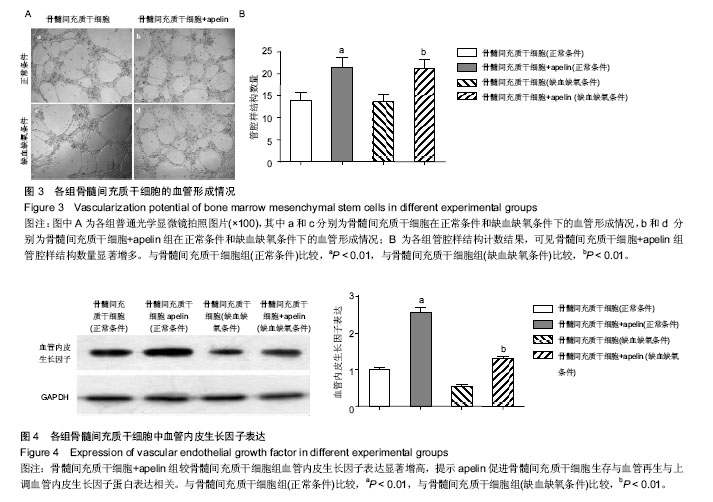| [1] Wen Z, Zheng S, Zhou C, et al. Repair mechanisms of bone marrow mesenchymal stem cells in myocardial infarction. J Cell Mol Med. 2011; 15(5):1032-1043.[2] Faiella W, Atoui R. Therapeutic use of stem cells for cardiovascular disease. Clin Transl Med. 2016; 5(1):34.[3] Safari S, Malekvandfard F, Babashah S, et al. Mesenchymal stem cell-derived exosomes: A novel potential therapeutic avenue for cardiac regeneration. Cell Mol Biol (Noisy-le-grand). 2016; 62(7):66-73.[4] Wang T, Tang W, Sun S, et al. Intravenous infusion of bone marrow mesenchymal stem cells improves myocardial function in a rat model of myocardial ischemia. Crit Care Med. 2007;35(11):2587-2593.[5] Wang T, Tang W, Sun S, et al. Mesenchymal stem cells improve outcomes of cardiopulmonary resuscitation in myocardial infarcted rats. J Mol Cell Cardiol. 2009;46(3): 378-384.[6] Wang T, Tang W, Sun S, et al. Improved outcomes of cardiopulmonary resuscitation in rats with myocardial infarction treated with allogenic bone marrow mesenchymal stem cells. Crit Care Med. 2009;37(3):833-839.[7] Xing Y, Hou J, Guo T, et al. microRNA-378 promotes mesenchymal stem cell survival and vascularization under hypoxic-ischemic conditions in vitro. Stem Cell Res Ther. 2014;5(6):130.[8] Liang D, Han D, Fan W, et al. Therapeutic efficacy of apelin on transplanted mesenchymal stem cells in hindlimb ischemic mice via regulation of autophagy. Sci Rep. 2016;6: 21914.[9] Zeng X, Yu SP, Taylor T, et al. Protective effect of apelin on cultured rat bone marrow mesenchymal stem cells against apoptosis. Stem Cell Res. 2012;8(3):357-367.[10] Li L, Zeng H, Chen JX. Apelin-13 increases myocardial progenitor cells and improves repair postmyocardial infarction. Am J Physiol Heart Circ Physiol. 2012; 303(5): H605-618.[11] Tempel D, de Boer M, van Deel ED, et al. Apelin enhances cardiac neovascularization after myocardial infarction by recruiting aplnr+ circulating cells. Circ Res. 2012;111(5): 585-598.[12] Hou J, Wang L, Hou J, et al. Peroxisome proliferator- activated receptor gamma promotes mesenchymal stem cells to express connexin43 via the inhibition of tgf-β1/smads signaling in a rat model of myocardial infarction. Stem Cell Rev. 2015; 11(6):885-899.[13] Psaltis PJ, Schwarz N, Toledo-Flores D, et al. Cellular therapy for heart failure. Curr Cardiol Rev. 2016; 12(3): 195-215. [14] Suzuki G. Translational research of adult stem cell therapy. World J Cardiol. 2015; 7(11):707-718.[15] Narita T, Suzuki K. Bone marrow-derived mesenchymal stem cells for the treatment of heart failure. Heart Fail Rev. 2015; 20(1):53-68.[16] Khan I, Ali A, Akhter MA, et al. Preconditioning of mesenchymal stem cells with 2,4-dinitrophenol improves cardiac function in infarcted rats. Life Sci. 2016; 162:60-69.[17] Xue X, Liu Y, Zhang J, et al. Bcl-xL genetic modification enhanced the therapeutic efficacy of mesenchymal stem cell transplantation in the treatment of heart infarction. Stem Cells Int. 2015; 2015:176409.[18] Park JS, Suryaprakash S, Lao YH, et al. Engineering mesenchymal stem cells for regenerative medicine and drug delivery. Methods. 2015; 84:3-16.[19] Karantalis V, Suncion-Loescher VY, Bagno L, et al. Synergistic Effects of Combined Cell Therapy for Chronic Ischemic Cardiomyopathy. J Am Coll Cardiol. 2015; 66(18): 1990-1999.[20] Tanaka Y, Shirasawa B, Takeuchi Y, et al. Autologous preconditioned mesenchymal stem cell sheets improve left ventricular function in a rabbit old myocardial infarction model. Am J Transl Res. 2016; 8(5):2222-2233.[21] Bader AM, Klose K, Bieback K, et al. Hypoxic preconditioning increases survival and pro-angiogenic capacity of human cord blood mesenchymal stromal cells in vitro. PLoS One. 2015; 10(9):e0138477.[22] Goidescu CM, Vida-Simiti LA.The Apelin-APJ system in the evolution of heart failure. Clujul Med. 2015; 88(1):3-8.[23] Dalzell JR, Rocchiccioli JP, Weir RA, et al. The emerging potential of the Apelin-APJ system in heart failure. J Card Fail. 2015; 21(6):489-498.[24] O'Carroll AM, Lolait SJ, Harris LE, et al. The apelin receptor APJ: journey from an orphan to a multifaceted regulator of homeostasis. J Endocrinol. 2013; 219(1):R13-35.[25] Yamaleyeva LM, Shaltout HA, Varagic J. Apelin-13 in blood pressure regulation and cardiovascular disease. Curr Opin Nephrol Hypertens. 2016; 25(5):396-403.[26] Li L, Li L, Zhang Z, et al. Hypoxia promotes bone marrow-derived mesenchymal stem cell proliferation through apelin/APJ/autophagy pathway. Acta Biochim Biophys Sin (Shanghai). 2015; 47(5):362-367.[27] Mottaghi S, Larijani B, Sharifi AM. Apelin 13: a novel approach to enhance efficacy of hypoxic preconditioned mesenchymal stem cells for cell therapy of diabetes. Med Hypotheses. 2012; 79(6):717-718.[28] Novakova V, Sandhu GS, Dragomir-Daescu D, et al. Apelinergic system in endothelial cells and its role in angiogenesis in myocardial ischemia. Vascul Pharmacol. 2016; 76:1-10.[29] Hou X, Zeng H, He X, et al. Sirt3 is essential for apelin-induced angiogenesis in post-myocardial infarction of diabetes J Cell Mol Med. 2015;19(1):53-61.[30] Yang X, Zhu W, Zhang P, et al. Apelin-13 stimulates angiogenesis by promoting cross?talk between AMP-activated protein kinase and Akt signaling in myocardial microvascular endothelial cells. Mol Med Rep. 2014; 9(5): 1590-1596.[31] Momiyama Y. Association between plasma apelin levels and coronary collateral development in patients with stable angina pectoris. Atherosclerosis. 2014; 235(2):349-350.[32] Lu F, Zhao X, Wu J, et al. MSCs transfected with hepatocyte growth factor or vascular endothelial growth factor improve cardiac function in the infarcted porcine heart by increasing angiogenesis and reducing fibrosis. Int J Cardiol. 2013; 167(6):2524-2532.[33] Penna C, Perrelli MG, Karam JP, et al. Pharmacologically active microcarriers influence VEGF-A effects on mesenchymal stem cell survival. J Cell Mol Med. 2013; 17(1):192-204.[34] Moon HH, Joo MK, Mok H, et al. MSC-based VEGF gene therapy in rat myocardial infarction model using facial amphipathic bile acid-conjugated polyethyleneimine. Biomaterials. 2014; 35(5):1744-1754.[35] Huang C, Dai C, Gong K, et al. Apelin-13 protects neurovascular unit against ischemic injuries through the effects of vascular endothelial growth factor. Neuropeptides. 2016; 60:67-74.[36] Park JS, Yang HN, Yi SW, et al. Neoangiogenesis of human mesenchymal stem cells transfected with peptide-loaded and gene-coated PLGA nanoparticles. Biomaterials. 2016; 76: 226-237. |



